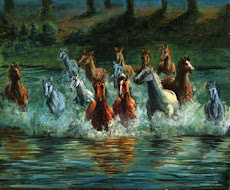
Sculptures, cave paintings, rock paintings, and petroglyphs from the Upper Paleolithic dating to roughly 40,000 years ago have been found, but the precise meaning of such art is often disputed because so little is known about the cultures that produced them. The oldest art objects in the world—a series of tiny, drilled snail shells about 75,000 years old—were discovered in a South African caveMany great traditions in art have a foundation in the art of one of the great ancient civilizations: Ancient Egypt, Mesopotamia, Persia, India, China, Ancient Greece, Rome, as well as Inca, Maya, and Olmec. Each of these centers of early civilization developed a unique and characteristic style in their art. Because of the size and duration these civilizations, more of their art works have survived and more of their influence has been transmitted to other cultures and later times. Some also have provided the first records of how artists worked. For example, this period of Greek art saw a veneration of the human physical form and the development of equivalent skills to show musculature, poise, beauty, and anatomically correct proportions.In Byzantine and Medieval art of the Western Middle Ages, much art focused on the expression of Biblical and not material truths, and used styles which showed the higher unseen glory of a heavenly world, such as the use of gold in the background of paintings, or glass in mosaics or windows, which also presented figures in idealized, patterned (flat) forms. Nevertheless a classical realist tradition persisted in small Byzantine works, and realism steadily grew in the art of Catholic Europe.Renaissance art had a greatly increased emphasis on the realistic depiction of the material world, and the place of humans in it, reflected in the corporeality of the human body, and development of a systematic method of graphical perspective to depict recession in a three dimensional picture space. In the east, Islamic art's rejection of iconography led to emphasis on geometric patterns, calligraphy, and architecture. Further east, religion dominated artistic styles and forms too. India and Tibet saw emphasis on painted sculptures and dance with religious painting borrowing many conventions from sculpture and tending to bright contrasting colors with emphasis on outlines. China saw many art forms flourish, jade carving, bronzework, pottery (including the stunning terracotta army of Emperor Qin), poetry, calligraphy, music, painting, drama, fiction, etc. Chinese styles vary greatly from era to era and are traditionally named after the ruling dynasty. So, for example, Tang Dynasty paintings are monochromatic and sparse, emphasizing idealized landscapes, but Ming Dynasty paintings are busy, colorful, and focus on telling stories via setting and composition. Japan names its styles after imperial dynasties too, and also saw much interplay between the styles of calligraphy and painting. Woodblock printing became important in Japan after the 17th century.

4 comments:
such a good one reviews through which is any one can gain the vast knowledge about the history of our art culture. thanks for sharing such subject with the hope of a new one.
This post is very fantastic.I think in this post we can vast knowledge the history of art to our culture. Thanks keep your blogging.
I think in this post we can vast knowledge the history of art to our culture. Thanks keep your blogging. It is a very important post.
Thanks for the useful information. such a good one reviews through which is any one can gain the vast knowledge about the history of our art culture. I read this and my self very appreciate with this blog.
Post a Comment